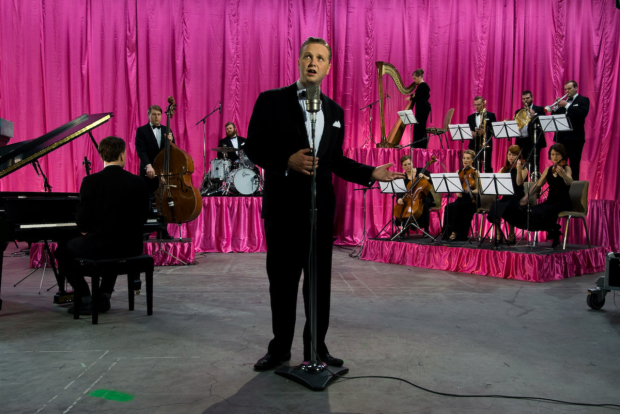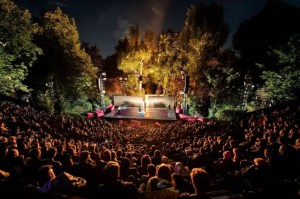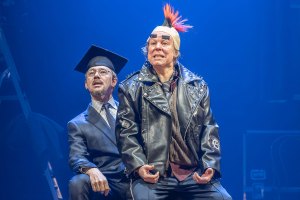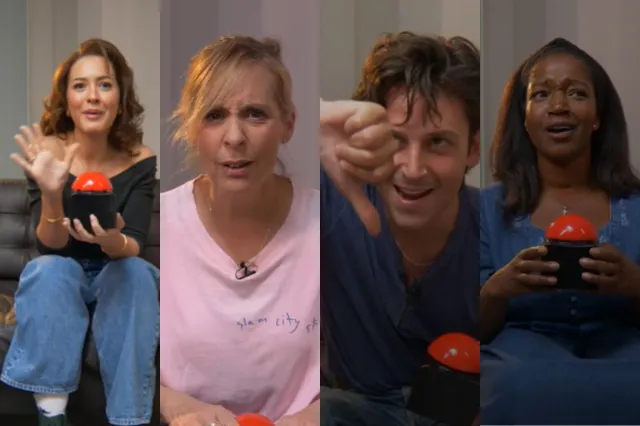Matt Trueman: Theatre needs more live moments
Taking inspiration from video performance artist Ragnar Kjartansson, Matt Trueman looks at what theatre productions such as ”Yerma” could be doing to ‘live in the moment more often’.

© Photo: Rafael Pinho
Bill O’Reilly, the old-school American political commentator, has become one of the internet’s great memes. After several aborted takes on a single line, unable to make sense of his teleprompter, he once lost the plot. "Fuck it," he yells at the studio staff, "We’ll do it live."
It’s a line I love. I’ve got a moth-eaten old t-shirt emblazoned with the words in a drawer somewhere. It’s not just the fury and frustration behind it, the breakdown of a polished veneer. To me, the phrase captures all the implicit daredevilry of live performance. It screams its showmanship: the risk and recklessness of it all. To hell with safety nets. Forget ‘in the can.’ "Fuck it. We’ll do it live." Anything could happen.
Theatre prides itself on its liveness. It’s what sets the art-form apart. It happens here and it happens now. It exists in front of us, in the moment, on the edge. On any given night, it could all go wrong. Lines might drop, tech might misfire, Laurence Fox might drop the C-bomb. Theatre is a high-wire act. It’s a ring of fire, a leap of faith. "Fuck it. We’ll do it live."
Except, most of the time, it’s not. Not even close. The vast majority of shows run like clockwork, so well-drilled that the curtain comes down at the same time each night. Liveness isn’t an absolute quality. It’s a sliding scale.
Last week, I caught up with two of the summer’s big shows: Yerma at the Young Vic, adapted and directed by Simon Stone, and the Ragnar Kjartansson exhibition at the Barbican. One’s a live piece of theatre, the other is dominated by video installations. Yet, curiously, it was the latter that felt the more live. Why?
'The vast majority of shows run like clockwork, so well-drilled that the curtain comes down at the same time each night'
Just as he did with The Wild Duck, Simon Stone has encased Yerma in a glass box. He cages the characters in, turning them into specimens under examination. Stripping out the furniture, Stone focuses our attention on behaviour and relationships: the tiny psychological battles of everyday lives. Watching through glass, you can’t but be aware of prying.
Physically, though, that glass is distancing. It puts a barrier between actors and audience. Contrary to the old mantra that theatre happens in the air between the two parties, Stone seals his actors off. They exist in a separate space. We hear them through speakers. We watch them from the outside. In a way, the performances are objectified: people placed in a display case. You feel the same show could happen whether we were there or not.
Every so often, Stone reminds us of the live event. Champagne sprays up the walls. Vomit spews into it. (‘Oh,’ you think, ‘Chicken soup.’) Just as a real mallard waddled through his Ibsen, a baby gurgles into his Yerma; a shard of reality, something incapable of acting, that punctures through the play’s fiction. Each of these reminds you that we’re sharing a space and a moment, but it comes as a jolt – a sudden return to the real, live event. That’s telling: the rest doesn’t feel all that live.
By contrast, Kjartansson’s video installations really do – even though they’re not.
In one, God, he croons a single lyric – ‘sorrow conquers happiness’ – on repeat for 45 minutes. The band behind him, surrounded by gaudy pink satin curtains and, like him, dressed in black tie, builds to a crescendo, falls away and builds again.
Another, The Visitors, plays on nine screens dotted around a space. Each shows a room of a house in Upstate New York, where Abba recorded their final album of the same name. In each, there’s a musician: a cellist in the corridor, Kjartansson in the bath with his guitar, a choir on the porch. Over an hour, they improvise around a couple of repeated riffs and lyrics, alone in space but, musically, in sync. Towards the end, they gather round the piano in the sitting room, then leave the house as a group, still singing, stomping through the fields and into the distance.
'Here’s the thing: you watch Yerma; you experience God'
Being videos, these pieces don’t need an audience. Press play and they’ll play, with or without us. Yerma‘s cast probably wouldn’t go on if we didn’t show. Kjartansson’s videos are oblivious to us. So why the difference?
Perhaps its that, where Stone invites us to look, Kjartansson invites us inside. His videos aren’t just on screens, they’re in rooms. God is surrounded by those pink satin curtains. You have to walk around The Visitors, and as you do, you hear it differently: electric guitar and drums in one corner, accordion and piano in another.
More than that, Kjartansson’s work hinges on repetition and, as such, it stresses its sense of time. That lyric in God changes as it repeats. Sometimes it seems sad, sometimes silly, sometimes celebratory. It becomes boring, then perks up, changes into something else. The whole thing is hypnotic. The music gets into your body; the rhythms are catching. You’re in a room with it, here and now, even though Kjartansson’s performance was a decade ago. Compare Yerma: though it’s happening now, it’s happening somewhere else – one the other side of the glass. Here’s the thing: you watch Yerma; you experience God.
There’s another key: fixity against improvisation. If Yerma feels almost object-like, that’s because it’s so set; rehearsed and refined and running on repeat. Kjartansson’s performances aren’t – or they weren’t. They’re improvisations, free and unfixed; performances negotiated in the moment, each a complete one-off. You see traces of that throughout. The aborted run at the top of God, when the double bassist gets the giggles. The horn player who sneaks a look at his watch. The moment someone nabs Kjartansson’s towel on a whim in The Visitors. His discovery that he can splash along with the song. Even on video, the liveness of these performance is somehow preserved.
'Some of the most exciting shows of recent years have embraced the uncertainty and the risk of improvisation'
On the porch in The Visitors, a middle-aged man sits in a small chair. It’s his job to fire a canon at the end of each song. There’s a moment where he almost lights it too early, mid-song, only for someone in the porch choir to stop him. Had he done so, it would have scuppered the whole thing. This one-off event, at a particular time of day, in a particular light, would have fallen apart.
Right now, theatre feels like it’s pushing for something similar. Some of the most exciting shows of recent years have embraced the uncertainty and the risk of improvisation. Secret Theatre’s A Series of Increasingly Impossible Acts played out afresh each night, its actors struggling to hold the show together. Likewise, Barrel Organ’s Nothing worked out its casting and structure at the top of each show. The director Ned Bennett rehearses shows like Pomona and Yen without entirely blocking them, allowing actors to find their way through a performance. Anthony Neilson does likewise and, in Unreachable at the Royal Court, you could see the actors improvising, playing with the material and with each other; taking risks, trying things out. It’s runs a real charge through the show.
Theatre could do with more of this. It should live in the moment more often. Remember Bill O’Reilly. "Fuck it. We’ll do it live."












